Text: Marianne Alfsen / Felix Media | Photo: Fredrik Naumann / Felix Features
Prepared when it matters: Training for trauma at IEMR
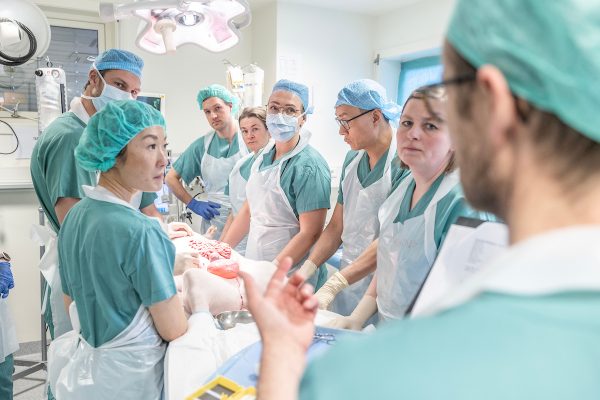

Severe trauma, caused by for instance stabbings and firearms, is not commonplace in Norwegian operating theatres. To perfect their skills, Norwegian trauma teams regularly train in realistic settings at the Institute for Experimental Medical Research (IEMR) in Oslo.
Text: Marianne Alfsen / Felix Media | Photo: Fredrik Naumann / Felix Features
“What does it mean when an anaesthesiologist says he is ‘happy’? What should the surgeon ask next? You need to communicate, to make sure you interpret the patient in the same way,” says Pål Aksel Næss.
“Telepathy is highly overrated as a form of communication, so talk to each other,” he adds humorously to the attentive group gathered in the operating theatre at the IEMR Core Facility for Large Animal Research.
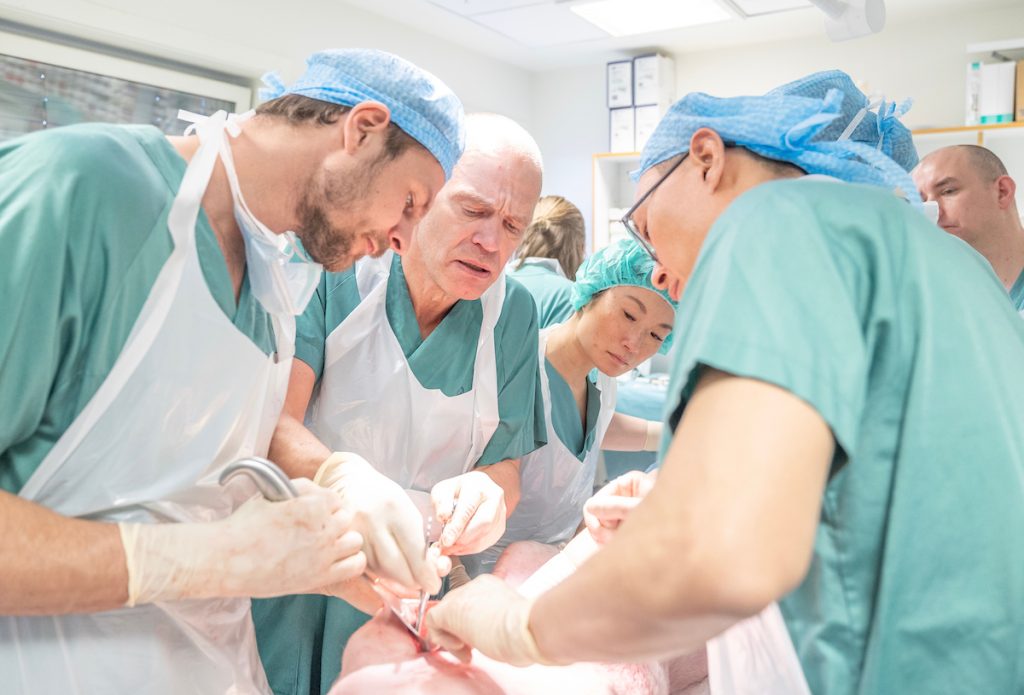
Pål Aksel Næss (in the middle) coaching a surgeon.
The mood might be cheerful and chatty, but the occasion is sombre: 51 highly skilled medical professionals are attending a course in advanced trauma surgery. The participants are trauma surgeons, anaesthetists, operating room and anaesthetist nurses – in other words: Full trauma teams.
“It is essential to train as a team, as the emphasis of the course is on interaction and communication in order to make sound treatment decisions,” explains Næss.
He is one of Norway’s most respected trauma surgeons and heads the trauma centre at Ullevål University Hospital in Oslo together with his wife Tina Gaarder. They led the trauma teams treating multiple bomb and gunshot victims after the 2011 terror attack on the government building in Oslo and the political youth camp at Utøya.
Today, trauma teams from 12 hospitals in Norway and abroad are gathered to perfect their skills under the supervision of Næss, Gaarder and their team of national and international instructors.
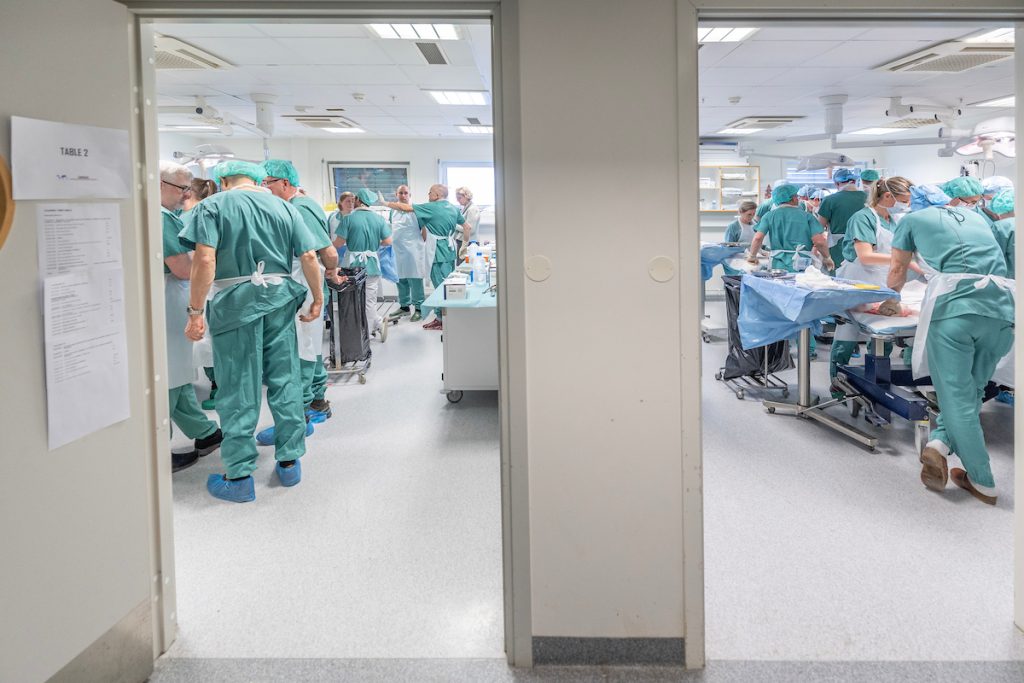
The trauma course is just one of a host of method courses offered by the IEMR each year. In 2023 alone, there will be 16 courses ranging from trauma surgery via gastric surgery to pre-hospital medicine – each with up to 60 participants.
The courses have a theoretical and a practical component. They also focus on the exchange of experiences. Today, for instance, the participants got to meet colleagues who work at the frontline of the war in Ukraine, with limited resources. The participants and instructors alike were deeply affected by their tales.
Pål Aksel Næss’ goal is to help medical professionals manage stress and make calm, informed decisions amidst chaos and fear.
“Sometimes, what your intuition tells you are right might not be,” explains Næss.
For any medical professional, volume training is essential – to do something over and over, until you can do it blindfolded.
“In our everyday practice, however, most of us rarely come across gunshots or stabbings. Our day-to-day work is mostly blunt trauma caused by car crashes and other accidents. Still, it is important to be prepared for when it happens. Here, we get to practise and learn from each other,” says Svein Are Osbakk, an anaesthetist and consultant at the Air Ambulance Department at Oslo University Hospital, with more than two decades of experience.
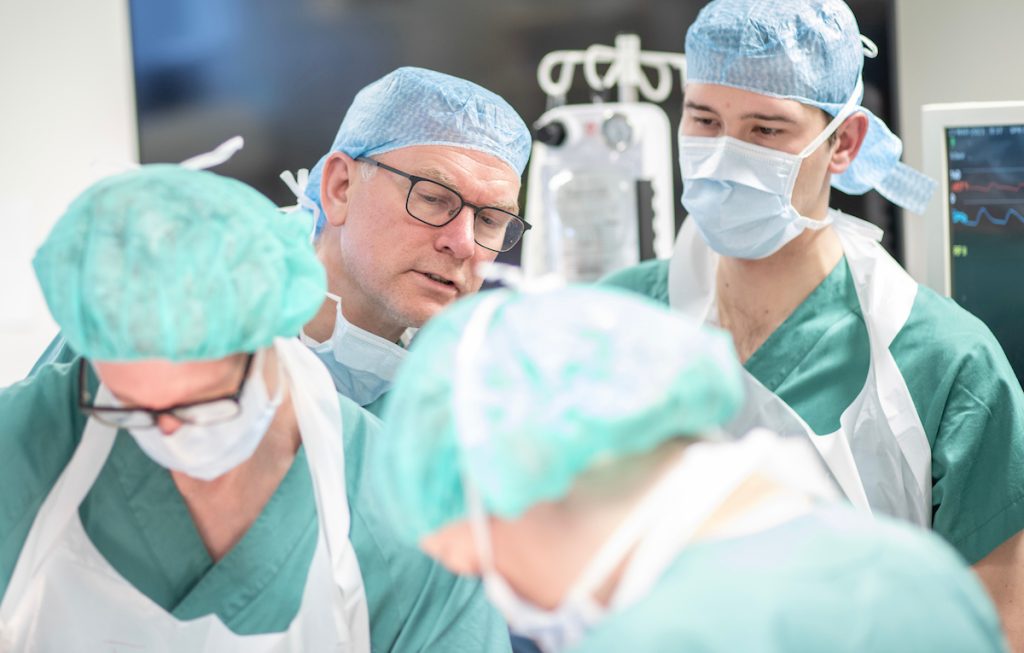
Svein Are Osbakk (second, from the left), an anaesthetist and consultant at the Air Ambulance Department at Oslo University Hospital, paying close attention to his colleagues.
“These courses help maintain the emergency preparedness in regions with a smaller patient base,” adds Osbakk.
Even though all course participants know the situation is not real, both Næss and Osbakk say the teams become totally engrossed.
It helps that the IEMR Core Facility for Large Animal Research is state of the art – with operating theatres featuring ample space for teaching and the same equipment as the medical teams use back home.
“This makes the training realistic,” says Osbakk, pointing out the benefits of the instructors being able to replicate real-life trauma while controlling the degree of difficulty to suit the specific learning goals of each session.
“The trauma field is constantly developing and we are never done learning. That is why training facilities like this are so incredibly important,” says Osbakk, adding:
“If this facility is reduced in any way as a consequence of coming changes, it would be a disaster.”
The experienced anaesthetist is humbled by the fact that they operate on live pigs under anaesthesia during the course.
“The fact that animal welfare is at the core of this facility is important to me,” he says.
“We use live animals because as of today, there are no commercial models that can replicate the life-threatening conditions, primarily bleeding, that we train to handle,” says Pål Aksel Næss, adding that large, live animals are only used for teaching purposes by experienced physicians, who have come far in their training.
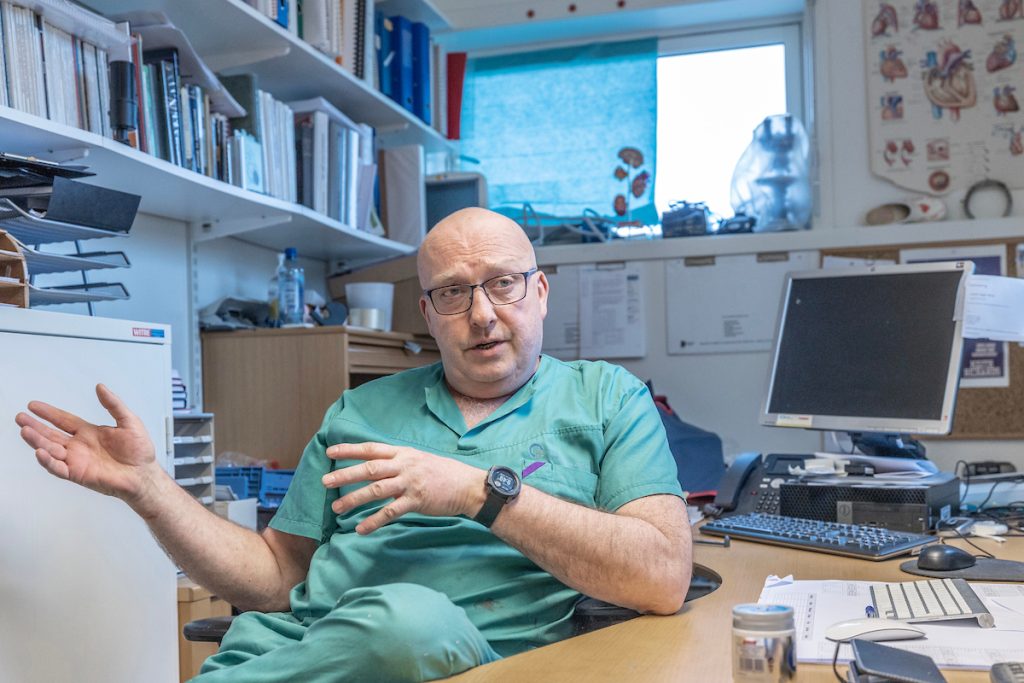
Morten Eriksen, Head of Section for Preclinical Physiology.
He attributes the high standards of the IEMR Core Facility for Large Animal Research to Morten Eriksen, Head of Section for Preclinical Physiology.
“Animal welfare is my primary concern,” says the 30-year veteran at IEMR, who through his ingenuity and wit has been instrumental in developing the unique facilities. Eriksen is personally in charge of preparing the animals for research or teaching purposes and does not hesitate to pull the brakes if an animal is showing the slightest sign of distress. And his decision is non-negotiable.
“What we do here advances the medical profession, it makes people better at their jobs and ultimately saves lives. That is why I do this job,” says Eriksen.